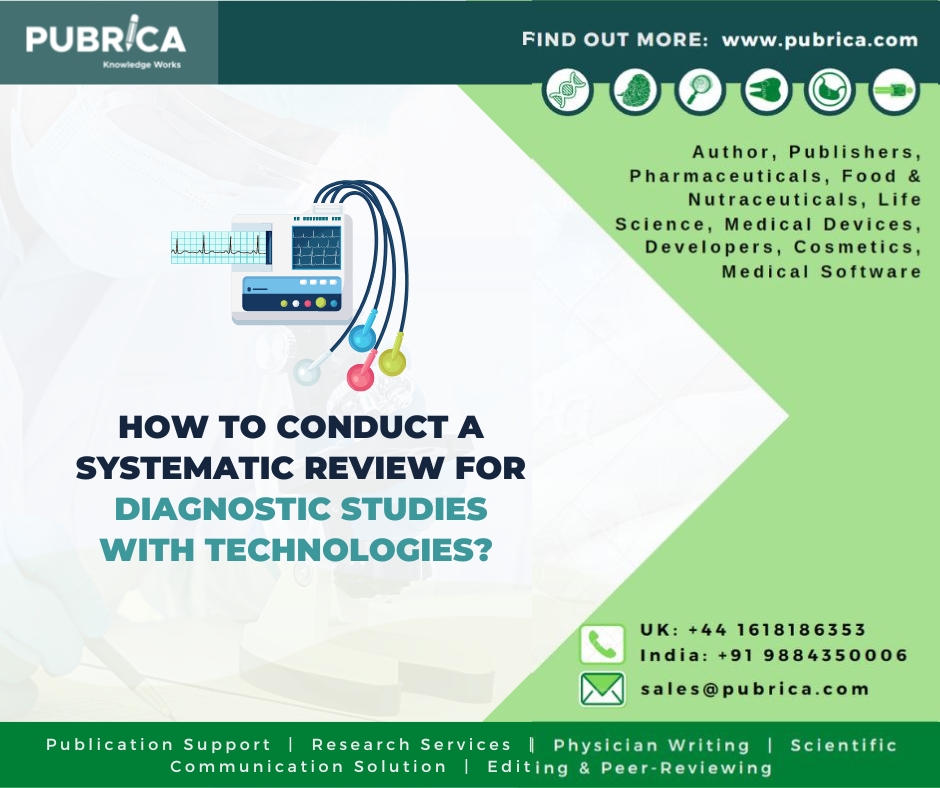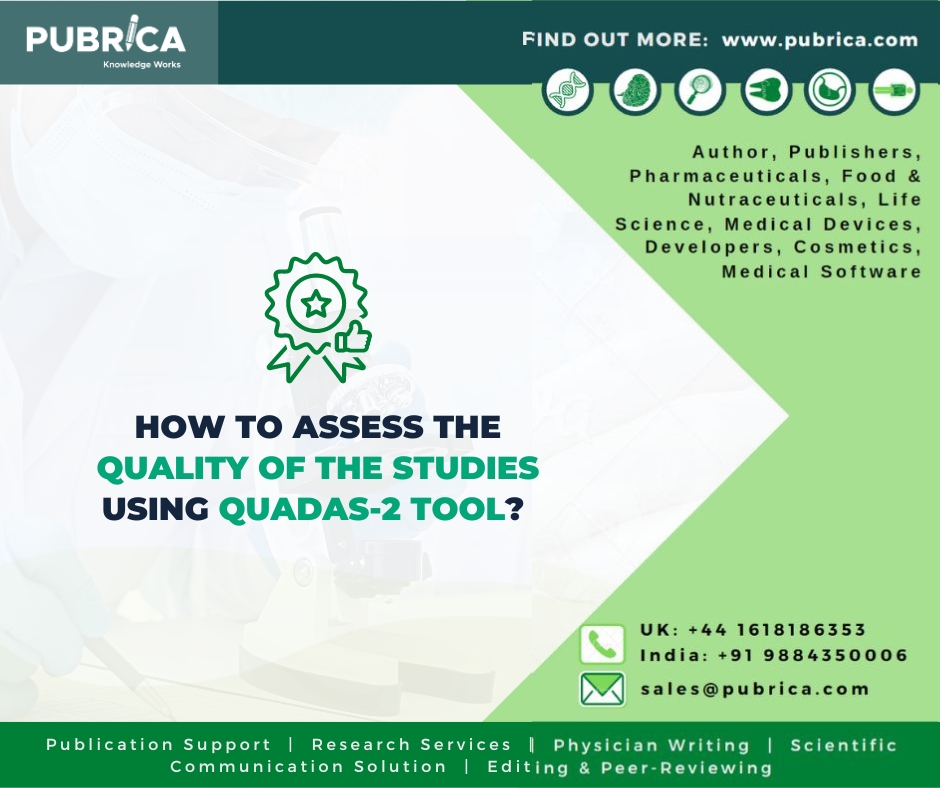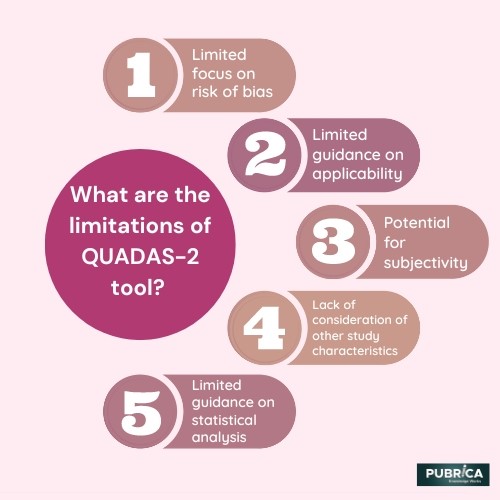
How to conduct a systematic review for diagnostic studies with technologies?
April 1, 2023
How to assess the quality of the studies using the QUADAS-2 tool?
April 10, 2023In brief
The Quality Assessment of Diagnostic Accuracy Studies (QUADAS-2) tool is a widely used tool for assessing the risk of bias and applicability concerns in systematic reviews of diagnostic accuracy studies. While QUADAS-2 is a valuable tool for assessing the quality of evidence from diagnostic accuracy studies, it has some limitations.
Introduction
While the QUADAS-2 tool is a widely used and validated tool for assessing the quality of diagnostic accuracy studies, there are several limitations to consider:

- Limited focus on the risk of bias: While the QUADAS-2 tool provides a structured approach to assess the risk of bias in diagnostic accuracy studies, it does not cover all potential sources of bias. For example, the tool does not assess the risk of bias due to selective reporting of outcomes or publication bias.
- Limited guidance on applicability: The QUADAS-2 tool provides some guidance on assessing the applicability of the studies to the research question, but it does not provide clear criteria or guidance on assessing the generalizability of the results to other populations, settings, or contexts.
- Potential for subjectivity: The QUADAS-2 tool relies on the subjective judgment of the reviewers to assess the risk of bias and the applicability of the studies. This can lead to variability in the assessments between different reviewers and potential bias in the selection of studies.
- Lack of consideration of other study characteristics: The QUADAS-2 tool focuses primarily on the risk of bias and applicability of the studies, but it does not consider other important study characteristics, such as the precision of the estimates or the generalizability of the results to different populations.
- Limited guidance on statistical analysis: The QUADAS-2 tool does not provide guidance on the statistical methods to be used to analyse the diagnostic accuracy data, such as meta-analysis or network meta-analysis.
Overall, while the QUADAS-2 tool is useful for assessing the quality of diagnostic accuracy studies, it should be used in conjunction with other tools and methods to ensure a comprehensive and robust assessment of the evidence (1).
About Pubrica
The team of researchers and writers at Pubrica creates scientific and medical study papers that can serve as invaluable resources for practitioners and authors. Using the reader to inform them of the gaps in the chosen study area, Pubrica medical writers assist you in writing and editing the introduction. Our specialists are conscious of the order in which the general topic, the issue, and the background are followed by the narrow subject where the hypothesis is stated.
References
Whiting, Penny F., et al. “QUADAS-2: a revised tool for the quality assessment of diagnostic accuracy studies.” Annals of internal medicine 155.8 (2011): 529-536.



